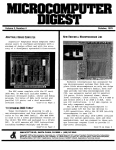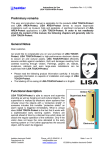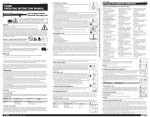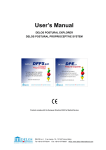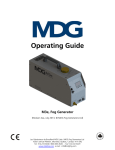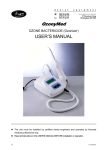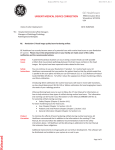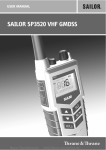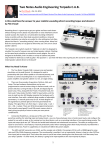Download How to Design a Better Reliability Test Program
Transcript
How to Design a Better Reliability Test Program Mike Silverman, Ops A La Carte, LLC Key Words: FMEA: Failure Modes and Effects Analysis ERT: Early Reliability Testing HALT: Highly Accelerated Life Testing ALT: Accelerated Life Testing SUMMARY & CONCLUSIONS More and more industries are competing on reliability, and companies need to develop more reliable products faster. However, reliability test plans are often generic or blindly following industry standards. Test plans must be tailored to fit customer use profiles. Also, reliability testing often occurs too late in the process. Tests and improvements often are performed when: • time is short • development is nearly complete • engineering corrections are difficult and costly • the product is nearly frozen This paper will offer a solution to these two fundamental issues of: • Testing too little solved with more robust test plans • Testing too late solved with Early Reliability Testing and meaningful test plans. We will review test plans created both with and without an FMEA to show the differences. ERT is a development tactic that offers earlier feedback and thus enables • more lead time • smarter engineering • better reliability and quality • less total cost & risk ERT needs to overcome potential challenges • samples from immature manufacturing • low test coverage • too few samples • immature designs • parallel / concurrent designs (can’t test until integrated) 2. DEVELOPING BETTER TEST PLANS 1. INTRODUCTION 2.1 FMEA In order to write better test plans, we must first understand; • the use environment • the key risks to the design The best tool for this is FMEA. • Once the risks have been identified and prioritized, it is time to develop mitigations. • Often times the best mitigations are with reliability testing More and more companies are using FMEA as an investment which saves them money over the life of the product. However, despite its enormous benefits, the FMEA can be very tedious, time consuming, and labor intensive. Thus, the method has become unpopular among many design engineers and it is viewed as a burden as oppose to a useful process. Failure Modes and Effects Analysis (FMEA) is the process by which we explore potential failure modes and then prioritize by key risks. Once the risks have been identified and prioritized, it is time to develop mitigations. Often times the best mitigations are with reliability testing. Stated another way, we cannot know what to test for unless we understand the key risks. Therefore, FMEA is one of the best sources of input for a Reliability Test Plan. To remedy this problem, a generic FMEA methodology can be developed that overcomes problems such as development time and cost. A library of generic FMEA has been created for various components that can be reused for different products. FIGURE 1: Inhaler used during FMEA We will provide a number of case studies and exercises on how to “think out of the box” in order to create more relevant 1 If we tried to develop a test plan without the use of FMEA, what tests could we think of for this device? We used the IEC standards and came up with a number of solid tests, including: • High/Low Temperature • Temperature Cycling • Vibration • Drop • Shock • Crush • Humidity • Altitude Did we miss any? Then we performed an FMEA and came up with the following: 1. Different cleaning solutions 2. Pen test 3. Lipstick test 4. Motor Oil Test 5. Cap Tether Test 6. Battery life test Different Cleaning Solution: The company was recommending that users use soap and water for their cleaning solution. But what if someone decided to use alcohol instead. Or what if they were to put the device in a dishwasher. Well, that went against what the company put in their users manual. So can we still assume that the user may do this. Absolutely! The first rule of a user’s manual is that users will not read them. Do not put any information in a users manual that you expect and require someone to read in order to figure out the functionality of the product because they will not read the manual. Make everything intuitive and anticipate what the user will do and design for that. In this case, we must assume the user will not read the manual and will use alternate cleaning solutions so in our early testing, we tried using alcohol and found that it caused the plastic to become brittle, causing it to crack over time. Is this a valid failure even though we told the user not to use alcohol. ABSOLUTELY. Therefore we changed the plastic to a different type, one that could be cleaned with alcohol. I like to think of an analogy to your cell phone (or mobile phone, or hand held phone, or handy, depending on where you are from). How many people have every dropped their cell phone from over 3 feet in height? I’ll bet that most of us have at some point in the life of our cell phone. And did the phone still work. I’ll bet that most of you answered yes. If you look at the drop height specifications for a cell phone, they are to be able to withstand a drop of 3 feet in a packaged container and just a few inches in an unpackaged situation. So clearly we are out of specifications when we drop from higher than 3 feet. So why did the phone still work. Because the cell phone manufacturers have anticipated that users will drop the phone from these heights and they have subjected the phones to the process of Highly Accelerated Life Testing (HALT) whereby they test the product beyond the specifications to determine and expand product margins as much as possible. This is what we should all do with all critical parameters of our products. Anticipate what the user may do and then make sure our product can withstand that. Forget about specifications. Forget about liability. Make sure the product will work to what the user will do. Because if the phone does break and the user returns the phone, he/she will expect a refund. If one is not given, then you will lose that customer forever because there are plenty of cell phone manufacturers who manufacturer phones that will survive this type of abuse. That is where reliability and competition intersect. So many companies are making their products more reliability because their competitors are doing the same. Pen Test: What do we mean by a pen test. Well, this inhaler is small enough to fit in your pocket. What else might you have in your pocket when you put this in your pocket – a pen, a set of keys, coins. A bit of background about this device. The device operates by passing a liquid from a canister through a disk with tiny holes in it. The size of the holes dictates the size of the particles being delivered. This disk in fact was the majority of the intellectual property (IP) of the company and also the majority of the expense of the product. If the disk gets damaged, you basically must throw away the entire device. So if a pen comes in contact with the disk, this is a major issue. We could design the product with a cover, but who replaces the cover on their pens or markers. Pens are made to be lost or forgotten. They get in the way when we need to use something. But what about if we tether the cap. Will that solve the problem. It certainly could. Lipstick Test: What about if you put in your purse? What might it come in contact with – pens and keys for sure, but what about something like lipstick or eye shadow. Could the cover have come off these products and come in contact with our inhaler? Certainly. So should we think about this during the design. Absolutely. Motor Oil Test: Could our product come in contact with motor oil. Well, we probably won’t have motor oil in our pocket or our purse, but what about if we are doing repairs on our car and then pick up the product. We could have motor oil on our hands, or grease from a hamburger we just ate, or all sorts of chemicals on our hands. Can the plastic withstand these types of chemicals. Could these possibly come in contact with the metal disk and clog it. These are areas we need to consider during the design and during the testing. Cap Tether Test: We talked about tethering the cap. If this is to become one of our mitigations against failure, then the tether must work. It cannot impede use of the device and cannot be such that the user wants to break off the tether to set the cap aside. It must be an integral part of the design, not an afterthought. 2 Battery life test: Since the device is portable, it will run off batteries. Have we tested out all scenarios in which the battery could be depleted in the middle of an operation such as priming or dosing. What happens if the battery has enough life left in it before dosing but runs out during dosing. Does the user know that the dosing did not occur. Is it possible that the user may get no dosage or just as bad, is it possible that the user got a dosage but thought they did not get a dosage, so when they replace the battery, the reapply the dosage. These are all scenarios we must think about during design. Figure 5: FMEA on a Robot 2.2 A FEW MORE EXAMPLES OF FMEA Here are a few more examples of products in which we performed FMEA first and then developed a test plan. Note that the pictures in the following section are samples of products we have worked on. These are not the actual products to protect the proprietary nature of the products we work on. Figure 6: FMEA on a GPS Unit Figure 2: FMEA on a Component Figure 7: FMEA on an Infusion Pump Figure 3 FMEA on an Automobile Figure 8: FMEA on a Medical Cabinet (for drug dispensing) Figure 4 FMEA on a Fan Figure 9: FMEA on a Cell Phone As you can see by these examples, we would have missed many of the potential failure modes had we not used FMEA to help drive our test plan/program. Figure 5 FMEA on a Hard Drive 3 3. EARLY RELIABILITY TESTING Early Reliability Test (ERT) is a development tactic that offers earlier feedback and thus enables: • more lead time • smarter engineering • better reliability and quality • less total cost & risk ERT needs to overcome potential challenges samples from immature manufacturing • low test coverage • too few samples • immature designs • parallel / concurrent designs (can’t test until integrated) This will show how to overcome these challenges in many cases 3.1 Overcoming Immature Manufacturing Early generation specimens typically are just a few specimens made with immature manufacturing process. On so few specimens, often we can afford to augment this test with simple examination (e.g.: naked eye or simple microscope) or even Failure Analysis. This enables us: to identify the cause of each failure • • • to exclude failures probably restricted to immature mfg to include failures probably significant for mature mfg Distinguish probably relevant failures versus probably irrelevant failures. Relevant failures found early may be “little gold nuggets”. These may forewarn what could happen with a mature process. Thus overcome fear & paralysis due to irrelevant failures and immature manufacturing 3.1.1 Case Study for Overcoming Immature Manufacturing Figure 10: Testing on a Gigabit Figerchannel Product 3.2 Overcoming Low Test Coverage During early development, in-house test coverage typically is low and specimens are few. Therefore test for qualitative (gross) issues and postpone test for quantitative (fine) issues This early test may be very worthwhile because it may save considerable cost compared to late learning & late engineering such as late board spin or late chassis changes. Sometimes, it is allowable to start with commercially available test equipment. This temporarily bypasses custom test programs & scripts that won't become available until later. Often this is good enough for worthwhile early test, even though complete coverage is postponed to later phase. 3.2.1 Case Study for Overcoming Low Test Coverage We tested an internet appliance product well before the diagnostics were ready. Therefore we just purchased some off-the-shelf software to exercise the memory, hard drive, and a few other components. The test coverage wasn’t complete but the coverage was good enough for useful early feedback. Very early during design, we tested a Gigabit Fiber Channel product and found a tolerance/rubbing issue between the housing and a component near the edge of the board This early feedback facilitated early board re-spin by moving this component. Figure 11: Testing on an Internet Appliance Product 4 3.3 Overcoming Few Samples In an early generation, typically only a few specimens are available. Therefore engineers previously avoided early testing. Instead, from even a few specimens, we can use a test / analyze / fix method and gain early qualitative feedback. During early development with few specimens, it is quite feasible & worthwhile to test for qualitative (gross) defects & failures in order to gain early qualitative feedback and hence to stimulate early engineering changes. During later development with numerous specimens, it is also required to test for quantitative (fine) defects and failures in order to gain quantitative feedback and hence to prove product lifetime. There is useful synergism between these two tests. Typically samples will fail within a fairly tight distribution. Therefore Highly Accelerated Life test (HALT) can be used to trade test margins for a size of specimen population. Thus even with few samples, HALT test of the outer edge of this distribution will tell about product performance. Successive generations are usually strongly correlated in defects, wear, fatigue, failures, mechanisms and root causes. Previously, this correlation was not sufficiently appreciated. These correlations enable smarter tactics. In parallel with early development, use a few specimens from an early generation to develop test technology & resources such as: • test apparatus • test methods • test analysis • test acceleration techniques • test monitoring methods ERT often can provide earlier understanding of causes and mechanisms for defects, wear, fatigue and failure that otherwise would degrade the final generation. Also, ERT test enables • much more lead time for reliability work • longer test runs • milder acceleration • easier extrapolation • minimized schedule-driven compromises • easier and smarter follow-on engineering 3.3.1 Case Study for Low Samples We tested a $100K cooling cabinet with multiple subunits. These were separated and tested as individual subunits. Spares were used only for a a few of the critical subunits rather than as second copy of the entire system. Figure 12: Testing on a Storage Cabinet separated into subunits 3.4 Overcoming Immature Designs For immature designs, we can again use HALT for early discovery of qualitative design defects. This will accelerate design maturation. The goal of this reliability test is qualitative learning to uncover problems rather than quantitative learning to “pass” final generation The earlier we test and uncover defects, the more time and money we will save which can be used partially to allow more time and money for later quantitative tests. During an early generation, often it is more sensible to test the product margins rather than to test for manifest failure and product lifetime. If we divide up the product life cycle into three phases – P1 being the Feasibility Phase, P2 being the Development Phase, and P3 being the Qualification Phase, then when should we test for reliability? P1, P2, or P3? Figure 13: Typical Development Phases For best results, reliability testing is done at all three phases: - In P1, test for early reliability feedback - In P2, test for cleaner specimens, and better coverage - In P3, test to validate the design We should perform experimental tests early and life tests later. Do not try to run life tests on generation P1 because P1 typically is NOT built with final materials, design, process and thus P1 defects, wear, fatigue and failure may be NOT 5 relevant to later generations. Start Lifetime & Reliability Demo during P2, so this is completed before the end of P3. For a project that develops subunits in parallel, test each subunit as early as it is available (P1) rather than waiting for final system test (P3) when it is painfully late. Start test as soon as subunits are ready for integration. Don’t wait for SW or diagnostics to be complete. Just make sure you have a way to functionally test unit. Worst case is inability for functional test of two subunits. Once subunits are ready for physical integration, we can test these nonoperationally. This less desirable than full-functional test Nevertheless we still can perform vibration tests to find resonant frequencies. This may point out many things, including component interference issues, mounting issues, and board layout issues. 3.5.1 Case Study for Overcoming Parallel Development We tested a Neutrino Telescope for the National Science Foundation (NSF). This product could be tested with full functions only if all the pieces were working. Rather than waiting for that, we elected to start with some non-operational testing on some fixtures we custom-designed. Figure 14: Reliability Testing during product development 3.4.1 Case Study for Overcoming Immature Designs For an electro-mechanical medical device during P0, we knew that life test was premature. Instead during P1, we tested margin and characterization to prove design repeatability. During P1, this was more feasible and valuable than testing until manifest failure. We set up a high-speed camera on the mechanical assembly and tested during hundreds of runs on several products. Thus we measured the repeatability of the mechanical design. Figure 16: Neutrino Telescope Unit. Picture on left is final assembly and picture on right is the subassembly. 4. CONCLUSION Reliability test plans are often generic or blindly following industry standards. Test plans must be tailored to fit customer use profiles. FMEA is a development tactic that can help solve the problem of testing too little by uncovering failure modes that require tailored test methods rather than only cookbook methods from industry standards. Also, reliability testing often occurs too late in the process. There are many methods we can use to start the testing process earlier in order to get better results faster. ERT is a development tactic that can enable earlier feedback, smarter engineering, less total cost, and lower risk for reliability. Thus ERT offers better final product and better reliability. \\ Figure 15: High Speed Camera Equipment used to Overcome Immature Designs 3.5 Overcoming Parallel Development Parallel or concurrent design & development requires mating two or more subunits as prerequisite for meaningful test data. This impedes test prior to integration. Nevertheless, we still can test earlier, although not as less early as serial development of subunits. 6 BIOGRAPHIES Mike Silverman, CRE Ops A La Carte, LLC 990 Richard Ave., Suite 101 Santa Clara, CA 95050 e-mail: [email protected] Mike Silverman is Managing Partner of Ops A La Carte, a Reliability Consulting firm. He has over 25 years experience in reliability engineering, reliability management and reliability training. He is an experienced leader in reliability improvement through analysis and testing. Mike is also an expert in accelerated reliability techniques, including HALT and HASS. Through Ops A La Carte, Mike has had extensive experience as a consultant to high-tech companies, and has consulted for over 500 companies in over 90 different industries. Mike has authored and published 15 papers on reliability techniques and has presented these around the world. He has also developed and currently teaches over 30 courses on reliability techniques. Mike is a Certified Reliability Engineer (CRE) through American Society for Quality (ASQ). Mike is a member of ASQ, IEEE, SME, ASME, PATCA, and IEEE Consulting Society. Mike is currently the IEEE Reliability Society Santa Clara Valley Chapter Chair. 7







